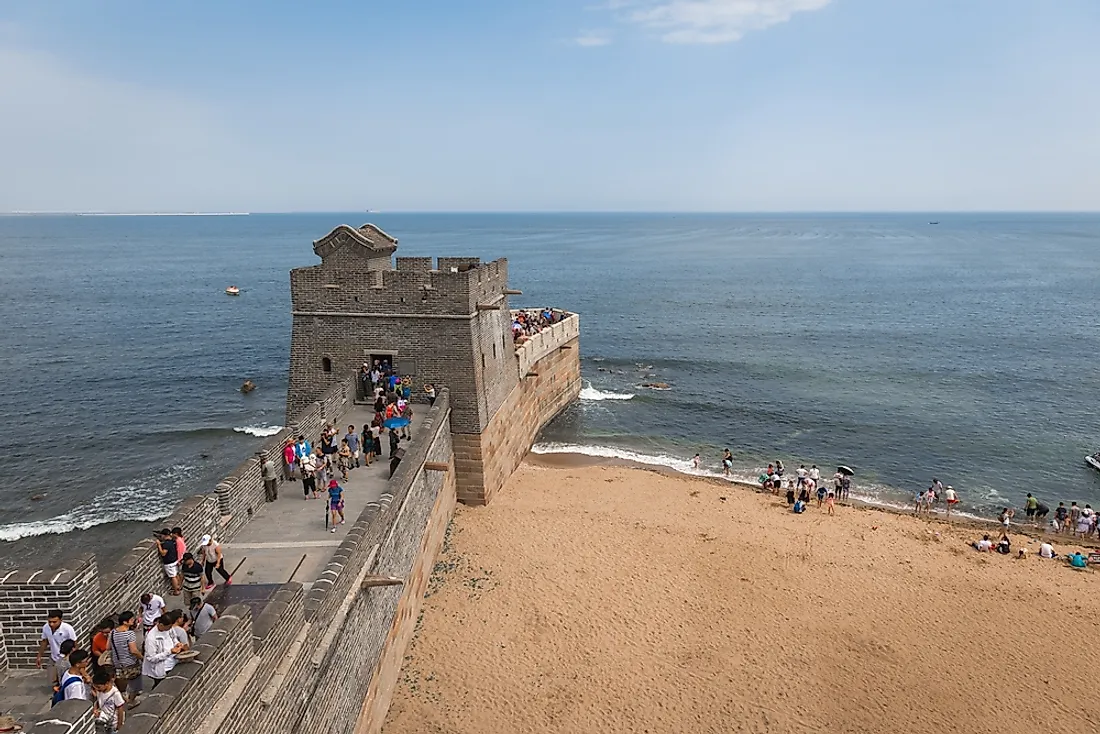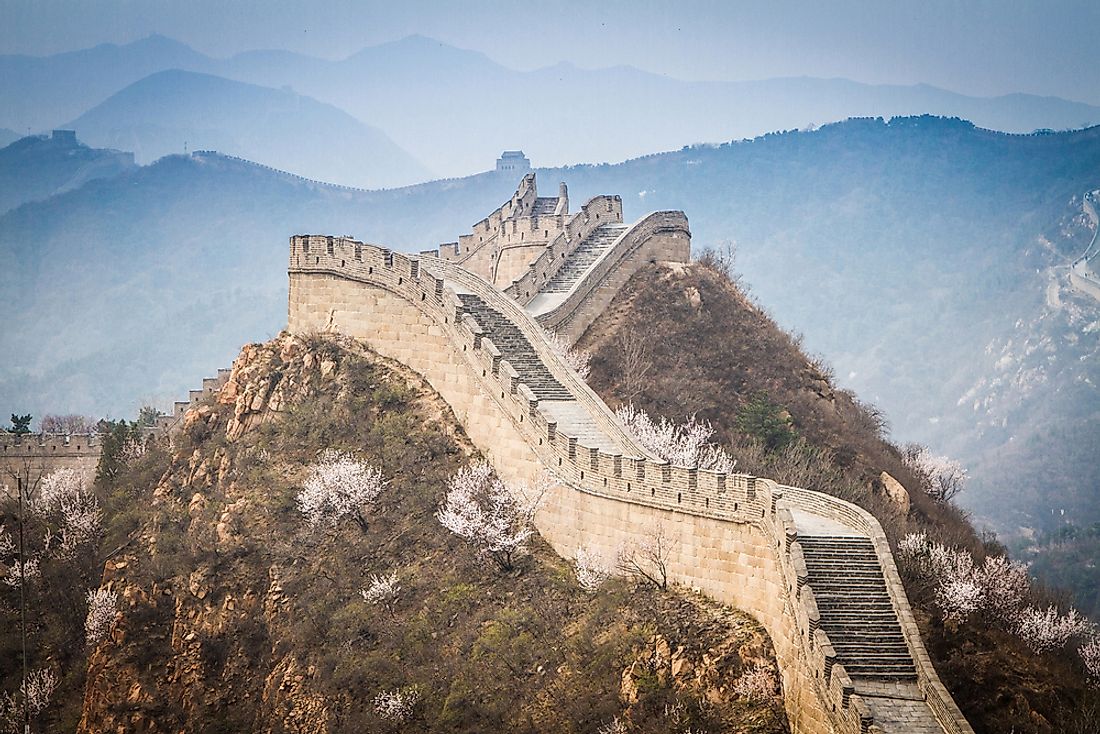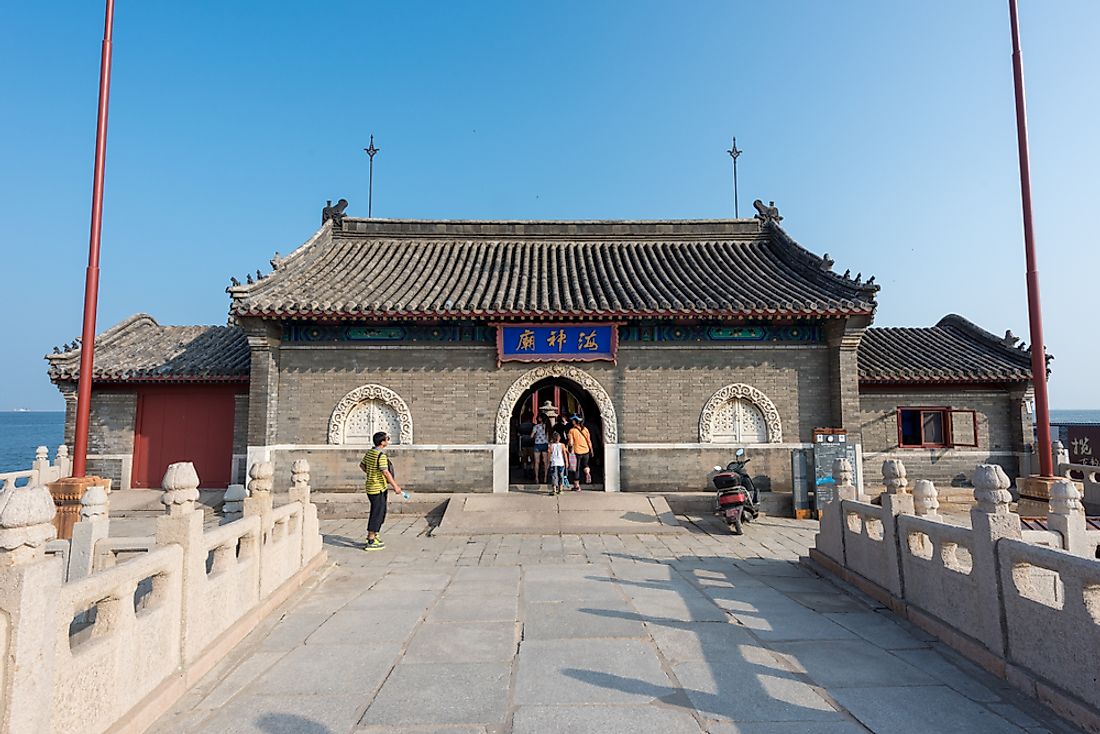Best Tourist Attractions Along the Great Wall of China

The China National Tourism Administration has rated several sites along the Great Wall of China as AAAAA tourist attractions. The AAAAA tourist attractions are also known as Scenic areas. They are China’s best-maintained and most important tourist sceneries. The China National Tourist Administration has given these areas high level-rating categories. In the beginning, 66 areas gained approval out of the 106 areas nominated. Since then, subsequent areas have made it to the list of China’s best attractions. As of today, China has 249 official AAAAA tourist attractions.
Some of the best tourist attractions along the Great Wall of China include Badaling Great Wall, Shanhai Pass, Baishi Mountain, and Yanmen Pass Scenic Area. Other AAAAA-rated tourist attractions in China include Mount Pan in Tianjin, Guwenhua Jie in Tianjin, Olympic Green in Beijing, and Baiyang Lake in Hebei among others.
4. Badaling Great Wall

Badaling is the most visited site on the Great Wall of China. It lies 80 km northwest of the urban Beijing city in Yanqing District. Badaling wall was built in 1504 during the Ming Dynasty together with a military outpost showing how the area is strategically important. The wall came up to act as a commanding and strategic area for protecting the Juyongguan Pass on the south and Beijing city. Belbao is the highest point on the Badaling Great Wall rising to 1,015 meters above sea level.
The Badaling was the first area of the Great Wall of China to be opened for tourists in 1957. The area has undergone great development including construction of restaurants, cable cars, and hotels. The Badaling Expressway completed recently connects central Beijing and Badaling.
US President Richard Nixon and his wife visited Badaling wall during his historic journey to China on February 24, 1972. Other leaders who have made trips to Badaling include Ronald Reagan, Mikhail Gorbachev, and Margaret Thatcher. Additionally, the expressway and Badaling were the finishing circuit during the Urban Road Cycling Course in the 2008 Summer Olympics.
3. Yanmen Pass Scenic Area
The Yanmen Pass also goes by the name Yanmennguan or Xixingguan in the Chinese language. It is a mountain pass with three fortified gates. In ancient China, the area served as a checkpoint, controlling movements between the valleys of Eurasian Steppe and central Shanxi. It was here that many important battles that stretched into the Second World War took place. Today, the pass is an AAAAA-rated tourist attraction on the Great Wall of China.
Geographically, Yanmen pass is in the mountains of Yanmen or Gouzhu between Hutuo River and Sanggan River basins. The Yanmenguan village lies 20 km from Shangguan county seat and 180 km northeast of the provincial capital Taiyuan.
Yanmen Pass has fortifications that protect the inner line of the China Great Wall together with Pianguan and Ningwu passes. In the past Yanmen was regarded the first among the nine passes under heaven. It has three gates, Dili, Central ate, and Tianxian gate, which are open to the people.
The Zhenbian Hall is a temple to Zhao and Li Mu general. Since 1856, local Buddhists have used the temple when Monk Shan Quan started worshipping in it. Beside the Dili gate, there is a temple to Guan Yu, the Chinese god of war.
The Yanmen Pass also has the remains of Guangwu, the former area county leader. The Han-era tombs are among his remains measuring 2-10 meters high. The Japanese archaeologists excavated them in early 20th century and the Chinese scientists studied them in the 1980s.
2. Shanhai Pass

The Shanhai Pass also goes by the name Shanhaiguan in Chinese language. It lies in Shanhaiguan District, Qinhuangdao, in the province of Hebei. Ming general Xu Da built the pass in 1381. In 1961, the pass became a National Cultural Site of China. The pass is located 300 km east of Beijing. The Jingshen Expressway links the pass to Beijing.
Historically, the pass acted as a frontline defense against Manchuria ethnic groups like the Manchus, Jurchen, and Khitan. Ming general Qi Jinguang fortified and constructed a city for military around the pass plus other cities, thus making it a heavily fortified pass in China. It is the best passes in the Great Wall of China today.
The Shanhai Pass is square-shaped with a 4 km perimeter. Its walls are 14 meters high and 7 meters thick. The north, south, and east sides of the wall are enclosed by a deep and wide moat with drawbridges above it. In addition, there is a tall bell tower standing in the middle of the pass.
The four sides of the Shanhai Pass had a gate and gate men at one particular time. The Weiyuan Gate lies in the north, Wangyang Gate on the south, Zhendong Gate on the east, and Ying’en Gate on the west. The Zhendong Gate is the only one standing currently due to lack of repairs. Zhendong Gate due to its position served important activities as it faces Beijing.
1. Baishi Mountain
The Baishi Mountain is also known as Baishishan in Chinese. It lies in Laiyuan County, in the province of Hebei in China. It has the highest peak of 6877 feet elevation and its main ridge extends over 22,966 feet. Baishi Mountain also lies 200 km southwest of Beijing and it forms the northern end of Taihang Chain. Around the Mountain’s foothill, lie the remains of the Great Wall.
The white marble makes parts of the mountain and that is where it derives its name. Baishi Mountain’s top is made of dolomite covering 20 km2. The National Tourism Administration of China established the Baishi Scenic Area in 2004. In September 2006, the area was converted to Baishi National Geological Park after being named a world geological park by UNESCO. Additionally, in early 2017, the China National Tourism Administration rated it as an AAAAA-level tourist attraction.
The mountain is prominent for its appearance during overcast days. During these days, the mountain’s peaks appear to be jutting out from low-lying mist and clouds. The Baishi Mountain has had China’s widest, longest, and highest glass skywalk since September 2014. The skywalk stretches to 95 meters at an elevation of 1,900 meters. In August 2015, the second skywalk was opened with an elevation of 1,600 meters.











